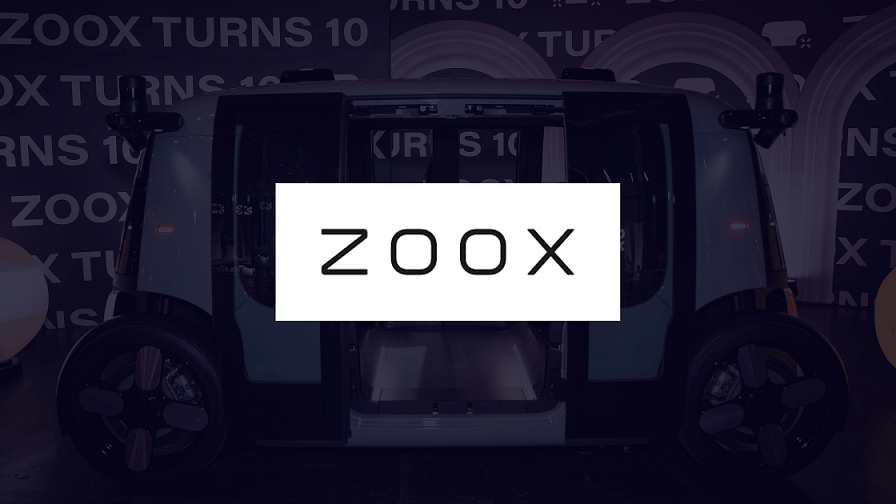In 2025, “autonomous vehicle” is no longer a buzzword, it’s a moving reality. The AV sector is a billion-dollar industry predicted to experience exponential growth in the next decade. One of the major players is Aurora Innovation (Nasdaq: AUR). This company is driving significant advancements in self-driving technology with a clear mission: to make transportation safer, more accessible, reliable, and efficient.
Aurora Innovation has been at the forefront of conversations since coming to birth in 2017. They are particularly focused on autonomous long-haul trucking and have struck notable partnership and investment deals.
At the heart of their technology is the Aurora Driver—a versatile self-driving system capable of operating a wide range of vehicles, from freight-hauling trucks to ride-hailing passenger cars. This technology forms the backbone of Aurora’s driver-as-a-service products, which are poised to transform industries like trucking and ride-hailing.
Let’s explore 10 key facts about Aurora Innovation, shedding light on how this groundbreaking company is delivering the benefits of autonomous driving across the United States.
Ten Things to Know About Aurora Innovation
Here are the top 10 things to know about Aurora Innovation in 2025:
1. Founding Story

Aurora Innovation was founded in 2017 by three industry veterans: Chris Urmson, Sterling Anderson, and Drew Bagnell. Chris Urmson was formerly the Chief Technology Officer of Alphabet’s self-driving car project, Waymo, while Sterling Anderson led the development of Tesla’s Autopilot, and Drew Bagnell was a professor at Carnegie Mellon University and a leader in the autonomous vehicle group at Uber. These three pioneers came together with a shared vision of bringing autonomous driving technology to the world, focusing on a safe, scalable, and efficient future for transportation.
2. First Self-driving Startup to Receive Official Authorization in PA

In 2018, Aurora Innovation achieved a significant milestone by becoming the first self-driving startup to receive official authorization to test its autonomous vehicles (AVs) on public roads in Pennsylvania. This authorization was a crucial step for Aurora, as it allowed the company to bring its cutting-edge technology out of the controlled environment of test tracks and into real-world conditions.
Testing on public roads is a critical phase in the development of autonomous vehicles. It exposes the technology to a wide range of unpredictable scenarios that are difficult to replicate in a closed setting. Pennsylvania, with its diverse road types, varying traffic patterns, and challenging weather conditions, provided an ideal environment for rigorous testing. By navigating these real-world challenges, Aurora was able to gather valuable data and insights that would help refine the Aurora Driver, ensuring it could safely and effectively handle the complexities of everyday driving.
3. The Aurora Driver

The Aurora Driver is the core technology that powers Aurora’s fleet of autonomous vehicles. This sophisticated self-driving system can operate across multiple vehicle platforms, including passenger cars, light commercial vehicles, and heavy-duty trucks, although Aurora currently focuses on long-haul trucks and semitrucks. It is believed that the Aurora Driver’s LiDAR sensor can see things up to four football fields away, and can tell whether the object is moving or stationery, aiding safety maneuvers. On the Aurora website, it is described as “a ruggedized, vehicle-agnostic, high-speed computing platform that ingests sensor data, runs the Aurora Driver software, and controls the vehicle.” The Aurora Driver is highly efficient and built with self-monitoring capabilities. It detects and migrate faults with no adverse effect to safety and performance.
For minor collision scenarios and rare on-road events the Aurora Driver has encountered, Aurora creates tens of thousands of tests. Similar to the expected performance of a human driver, the Aurora Driver is being designed to avoid a collision in these scenarios if possible.
To further demonstrate their confidence in the Aurora Driver, the Aurora team understudied available fatal collision details on the Dallas to Houston lane that involved a tractor trailer for the years 2018-2022. Aurora simulated those collisions to understand how the Aurora Driver would have acted under similar circumstances. Of the 32 collisions, there were 29 where the Aurora Driver could have been operating the initiating vehicle. Based on further analysis, a conclusion was reached that had the Aurora Driver been driving, the combination of its powerful sensor suite and attentive driving behavior would have prevented these collisions. In other words, none of these fatal collisions would have occurred.
4. Acquisition of Uber ATG

In 2020, Aurora acquired Uber’s Advanced Technologies Group (ATG), a move that significantly bolstered its resources and talent pool, pushing its valuation north of $10 billion. Surprisingly, Aurora did not pay cash for Uber ATG. Instead, Uber handed over its equity in ATG and even invested $400 million into Aurora, which gave it a 26% stake in the combined company, according to a filing with the U.S. Securities and Exchange Commission. The investment made Uber one of Aurora’s major shareholders. Prior to the acquisition, Uber had been battling with a 2017 lawsuit from Waymo for trade secret theft and patent infringement (which Uber settled in 2018), as well as the 2018 fatal crash involving an Uber ATG autonomous test vehicle.
Aurora’s strategic acquisition of Uber helped accelerate its development timeline and expanded its expertise in autonomous driving.
5. Aurora Gave President Obama an Autonomous Ride in a Netflix Docuseries

Former U.S. President, Barack Obama, enjoyed an autonomous ride in a fully autonomous Aurora Driver-powered Toyota Sienna, operating without a safety driver on their Pittsburgh proving grounds. This feat represented the first time a U.S. president has ridden in an autonomous vehicle.
The event occurred during a Netflix series, “Working: What We Do All Day”, which premiered in May and explores the meaning of work in a time of rapid change. It was produced and hosted by former President Barack Obama. The docuseries provided a glimpse into how Aurora is building a company with an unmatched team and culture, as well as new, innovative career opportunities.
6. Premier Autonomy

Aurora’s Premier Autonomy is a new program providing early access to over 1 billion of Aurora’s driverless miles to Uber Freight carriers through 2030. The program is the latest in their longstanding partnership to integrate and deploy autonomous trucks on the Uber Freight network to enable carriers of all sizes to improve utilization and enhance business efficiency through autonomous technology. Additionally, Uber Freight will be one of Aurora’s first customers on its Dallas-to-Houston freight route, with driverless hauls for shippers expected at the end of 2024.
7. The Volvo VNL: A Partnership Benchmark

In 2021, autonomous vehicle startup Aurora Innovation reached an agreement with Volvo to jointly develop autonomous semitrucks for North America. This partnership has brought about several innovations and pilot tests. The most recent output of this combined effort is the introduction of the Volvo VNL autonomous semitruck.
This autonomous semitruck is specifically designed for hub-to-hub highway transport. This vehicle combines Volvo’s expertise in heavy-duty trucking with Aurora’s self-driving technology.
The Volvo VNL is an embodiment of modern engineering. It’s equipped with an advanced suite of sensors, cameras, and cutting-edge software provided by Aurora Innovation, enabling Level 4 autonomous driving capabilities. This level of autonomy means the VNL can operate independently without human intervention in most conditions, revolutionizing how goods are transported across vast distances.
The innovation represents a significant leap towards safer and more efficient long-haul transportation, showcasing the path ahead for freight mobility.
8. First Scalable Autonomous Trucking System

Aurora and Continental have joined forces in a groundbreaking partnership aimed at developing and manufacturing the world’s first scalable autonomous trucking system. This collaboration leverages Continental’s extensive expertise in automotive technology and manufacturing with Aurora’s cutting-edge self-driving software and hardware.
The primary goal is to create a production-ready autonomous trucking system that can be manufactured at scale, enabling widespread deployment of self-driving trucks. Continental is responsible for developing the hardware components of the Aurora Driver, including sensors, computing units, and a crucial fallback system that ensures safety in case of primary system failure.
This partnership aims to accelerate the commercialization of autonomous trucking technology, moving Aurora from “feature ready” to “driverless ready.”
9. Aurora Capital Raise

In August 2024, Aurora conducted an upsized public offering of its Class A common stock, initially aiming to raise $420 million. Surprisingly, the offering exceeded its initial target, ultimately raising $483 million from Wall Street investors, which adds to their $1 billion liquidity as of the end of June 2024. The proceeds from the capital raise will likely be used to fund Aurora’s ongoing operations, including research and development, commercialization efforts, and strategic acquisitions.
The fact that Aurora exceeded its initial fundraising goal indicates positive investor sentiment towards the company’s vision and progress.
10. Autonomous Footprints

Aurora has logged over 17,000 commercial miles per week, far exceeding its target to autonomously haul 50 loads per week for customers. They have already hauled over 1,300 loads year-to-date through July 31st, exceeding the number of loads they hauled for the entirety of 2022. Aurora has autonomously delivered (under the supervision of vehicle operators) over 2,290 loads, driving more than 630,000 commercial miles, with nearly 100% on-time performance for their pilot customers, including FedEx, Werner, Schneider, and Uber Freight. Several big-name partners are supporting Aurora’s pilot testing program, as they look forward to officially launching their driverless-ready freight trucks by the end of the year.
Aurora has primarily conducted its pilot tests in the state of Texas, specifically running trucks between the Dallas-Fort Worth area and Houston, with a commercial-ready terminal located in Palmer, Texas. They have also conducted pilot tests in Pittsburgh, Pennsylvania, where they are headquartered. Aurora is also expanding its test fleet operations into the Bay Area in California.
You May Also Like:
- Ten Amazing Things to Know About Waymo in 2024
- Ten Interesting Things to Know About Kodiak Robotics
- Top 20 Autonomous Vehicle Companies in the U.S. (2024)
- Understanding ADAS in Autonomous Vehicles and How It Works
- Driverless Technology: Key Components of Autonomous Vehicles (Complete Teardown)
- 10 Things You Should Know About Zoox After 10 Years Building Autonomous Vehicles
Conclusion
Aurora’s autonomous trucks have the potential to be 32% more energy efficient than traditional trucking, according to data obtained from Aurora research. This self-driving magnet, Aurora Innovation, is not just imagining the future of transportation; it is actively shaping it.

I’m Dr. Brandial Bright, also known as the AVangelist. As a dedicated and passionate researcher in autonomous and electric vehicles (AVs and EVs), my mission is to educate and raise awareness within the automotive industry. As the Founder and Managing Partner of Fifth Level Consulting, I promote the adoption and innovation of advanced vehicle technologies through speaking engagements, consulting, and research as we progress to level 5 fully autonomous vehicles.







